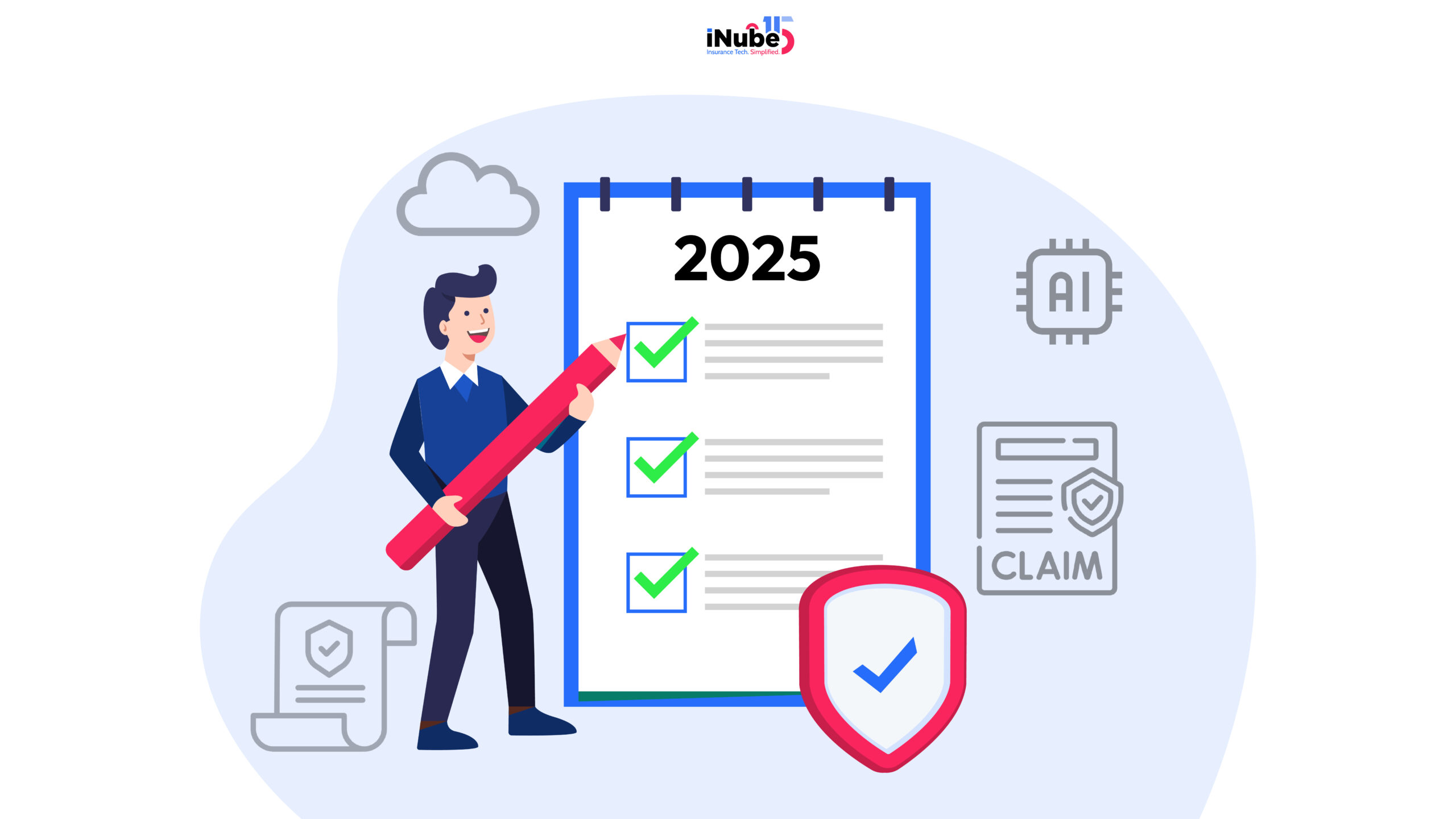Imagine being in 2020, where underwriting a standard insurance policy took three to five days. However, in 2025, AI significantly reduced this to 12.4 minutes while maintaining a 99.3% accuracy rate in risk assessment. That’s not an incremental improvement, which is a complete redefinition of what is possible. However, what makes the difference in 2025 is different from every previous year of insurance innovation: the technologies that were promising in 2023 and are “emerging” in 2024 have crossed the chasm from experimental to operational. The question is no longer- “Can these insurance solutions work?” It essentially is “Are you using them yet?”
The State of Insurance Digital Transformation- Going Beyond the Hype
The current state of insurance digital transformation is going through a drastic change. Here’s how it’s changing the insurance landscape:
From Pilot Operations to Productions
The era of “AI Pilot projects” is over. The successful insurers are moving beyond the proof-of-concept initiatives to an enterprise-wide deployment. The next wave of insurance digital transformation will be defined by adaptability, integration, and intelligent automation as the technologies mature, and customer expectations evolve.
From Point Solutions to Platforms
In earlier times, digital transformation efforts were essentially focused on automating individual processes, leading to fragmented claims and underwriting processes. However, in 2025, this is defined by integrated platforms that reimagine the entire insurance value chain. Today, the insurers are moving beyond foundational digitization toward a more connected and predictive operating model.
Cost Reduction has Become Value Creation
While efficiency gains are important, the focus has significantly shifted to revenue growth through new products, market expansion, and customer lifetime value optimization. The technology leaders in 2025 view this as a make-or-break year for capitalizing on insurance digital transformation trends, with selective adoption preserving cash flow while also opening up new data monetization paths.
Understanding the Intelligence Revolution with AI
Underwriting has long been the backbone of Insurance; however, the traditional methods often rely upon static data, manual assessments, and rigid risk models. The AI in Health Insurance is changing this paradigm, calling for what truly can be called an intelligent revolution.
By harnessing AI in Healthcare and advanced analytics, the insurers will be able to process vast amounts of structured and unstructured data, which includes everything from medical records and wearables to lifestyle indicators in real-time. This also enables more precise risk segmentation and faster decision-making, along with dynamic pricing, which is specifically tailored to individual profiles.
The result of this is a significant shift from reactive, one-time underwriting to a continuous, adaptive risk evaluation. The insurers will be gaining a sharper portfolio of predictability, while the policyholders will be benefiting from fairer premiums and also personalized coverage, which essentially sets a new benchmark for the future of Health Insurance.
The Problems Worth Solving
Here are the problems that are worth solving for Motor insurers:
The Bias Trap
If your historical data essentially reflects decades of discriminatory underwriting, your AI will be learning to discriminate more efficiently. The leading insurers will be employing bias-detection algorithms and fairness audits before any AI touches on a real application.
The Black Box Dilemma
AI will not be able to explain its decisions, which are legally useless in most jurisdictions. The solution? An explainable AI architecture that shows its work. They are slower to build and essential to deploy.
The Edge Case Problem
AI has trained millions of standard applications in what to do with a circus, ensuring its knife-throwing act or a startup seeking coverage for experimental fusion reactors. Humans remain essential for genuine novels.
Is Gen-AI for Insurance the Next Big Thing in Insurance?
If a traditional AI is a calculator, Gen-AI insurance is essentially a creative collaborator. With Gen-AI, the insurers are not just empowered to analyze data but are empowered to create content, generate insights, stimulate scenarios, and engage in natural language conversations, which would genuinely feel helpful instead of being robotic.
Where does Gen-AI create the Immediate Value?
Here are the areas where Gen-AI is creating an immediate value:
Policy Document Generation
The P&C insurance policies essentially require customized language for specific risks and Gen-AI will be drafting the policy language that is based on risk parameters, regulatory requirements, and the customer’s needs. This significantly reduces the document preparation time from days to minutes while also ensuring due compliance and accuracy.
Customer Communication at Scale
Communication is definitely taking a step up with AI in the equation. The AI algorithms write clearer and more emphatic explanations instead of the human-drafted templates and seamlessly adapt to the tone based on the claim type, as well as the customer segment, and also operate in 27 languages without having any kind of translation services.
The Underwriting Research
When the underwriters encounter an unfamiliar industry or novel risks, the Gen-AI will be able to research the regulatory environments, analyze the comparable risks from other markets, and synthesize the industry reports, followed by offering a contextualized risk assessment that essentially includes an instant expert consultant.
Claim Investigation Support
The Gen-AI seamlessly analyzes the claims documents, photos, police reports, and the medical records for generating comprehensive case summaries, identifying the inconsistencies that would indicate fraud, and suggesting the investigation priorities that augment the adjusters instead of replacing them.
What’s Ahead?
The insurance solutions that actually work in 2025 are not experimental; instead, they are operational. The question is not whether AI underwriting, claims automation, Gen-AI applications, or Embedded insurance are effective; instead, the real question surrounds how effective they are proving in operations?

Archismita Mukherjee
Insurance Content Analyst


